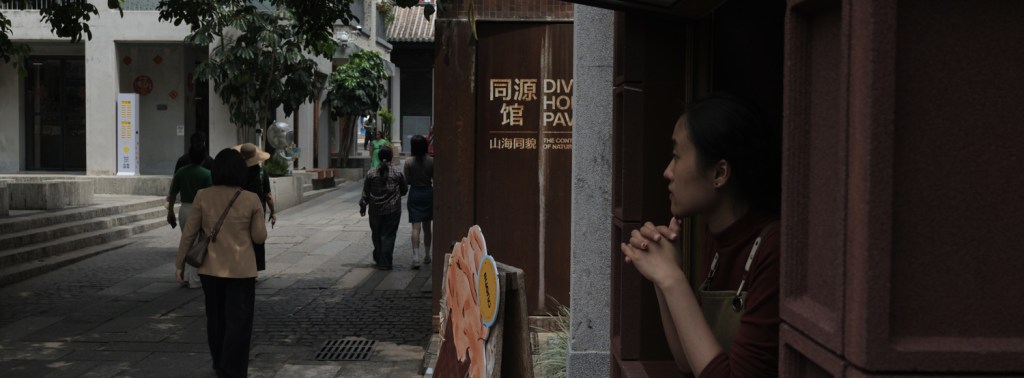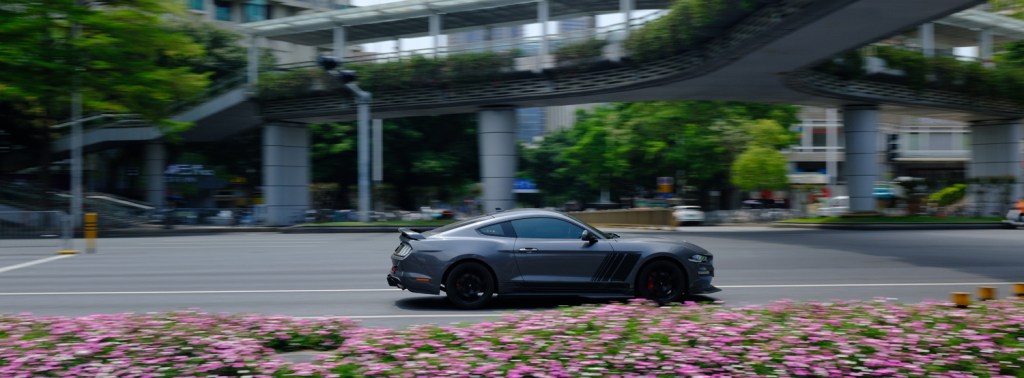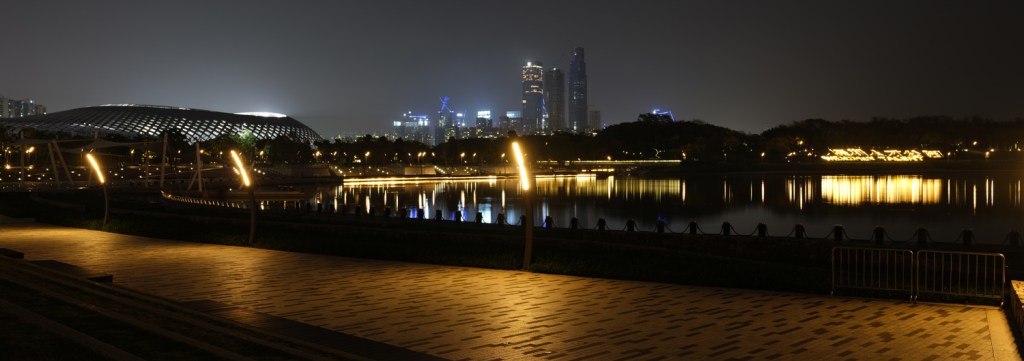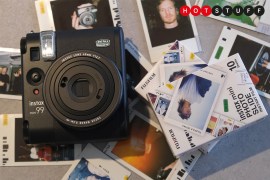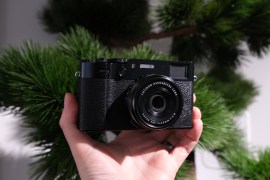Reviewing the Fujifilm GFX100RF medium format compact made me think differently about photography
Social media made compact cams cooler than permafrost; the GFX100RF might be the new form factor champ

Stuff Verdict
A genuine unicorn of a camera that takes outstanding stills. It’ll be overkill for many, but medium format just doesn’t get smaller or lighter than the Fujifilm GFX100RF.
Pros
- Outstanding 102MP image quality
- Digital zoom and aspect ratio dial bring shooting flexibility
- Impressively compact and wonderfully well-built
Cons
- Stabilisation and aperture compromises to keep size in check
- Only basic video recording
- A lot of buyers will struggle to justify the premium over the X100VI
Introduction
Don’t let the name fool you: medium format camera sensors are huge. The monstrous 102MP unit found inside the GFX100RF is almost four times as big as the APS-C sensor found in the phenomenal X100VI fixed-lens compact. For Fujifilm to somehow squeeze one inside a rangefinder body that makes system camera rivals look positively portly is a massive achievement.
With so many pixels to play with, Fuji was then free to add enough in-camera cropping and digital magnification to give dedicated zoom lenses a run for their money. The firm has also gone back into its archives and emerged with a new aspect ratio dial, letting you mimic the panoramic pics of long-retired Fuji film cameras.
This format flexibility was sure to catch the eye of street photographers that would otherwise gravitate towards the luxurious Leica Q3 – which has a smaller full-frame sensor. It also helps that at $4899/£4699, the GFX100RF undercuts its German rival by some margin. That’s still mighty pricey, of course, and three times what you’d pay for the X100VI and its APS-C sensor. Fuji has also made a few cutbacks in order to shrink the dimensions so dramatically; can the GFX100RF still claim to be the ultimate street snapper as a result?
How we test cameras
Every camera reviewed on Stuff is tested in a range of lighting conditions, with a variety of subjects and scenes. We use our years of experience to compare with rivals and assess ergonomics, features and general usability. Manufacturers have no visibility on reviews before they appear online, and we never accept payment to feature products.
Find out more about how we test and rate products.
Design & build: all grown up
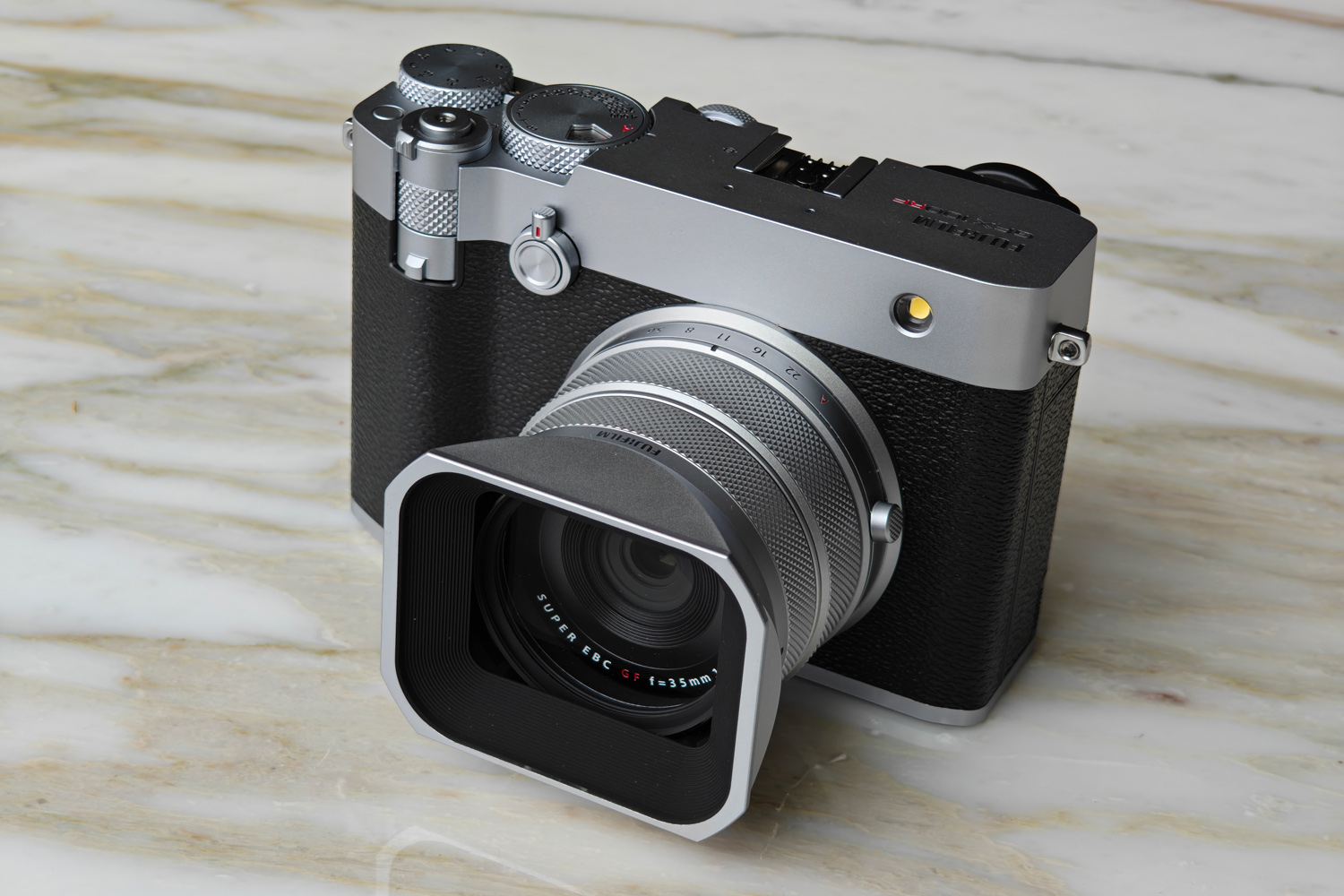

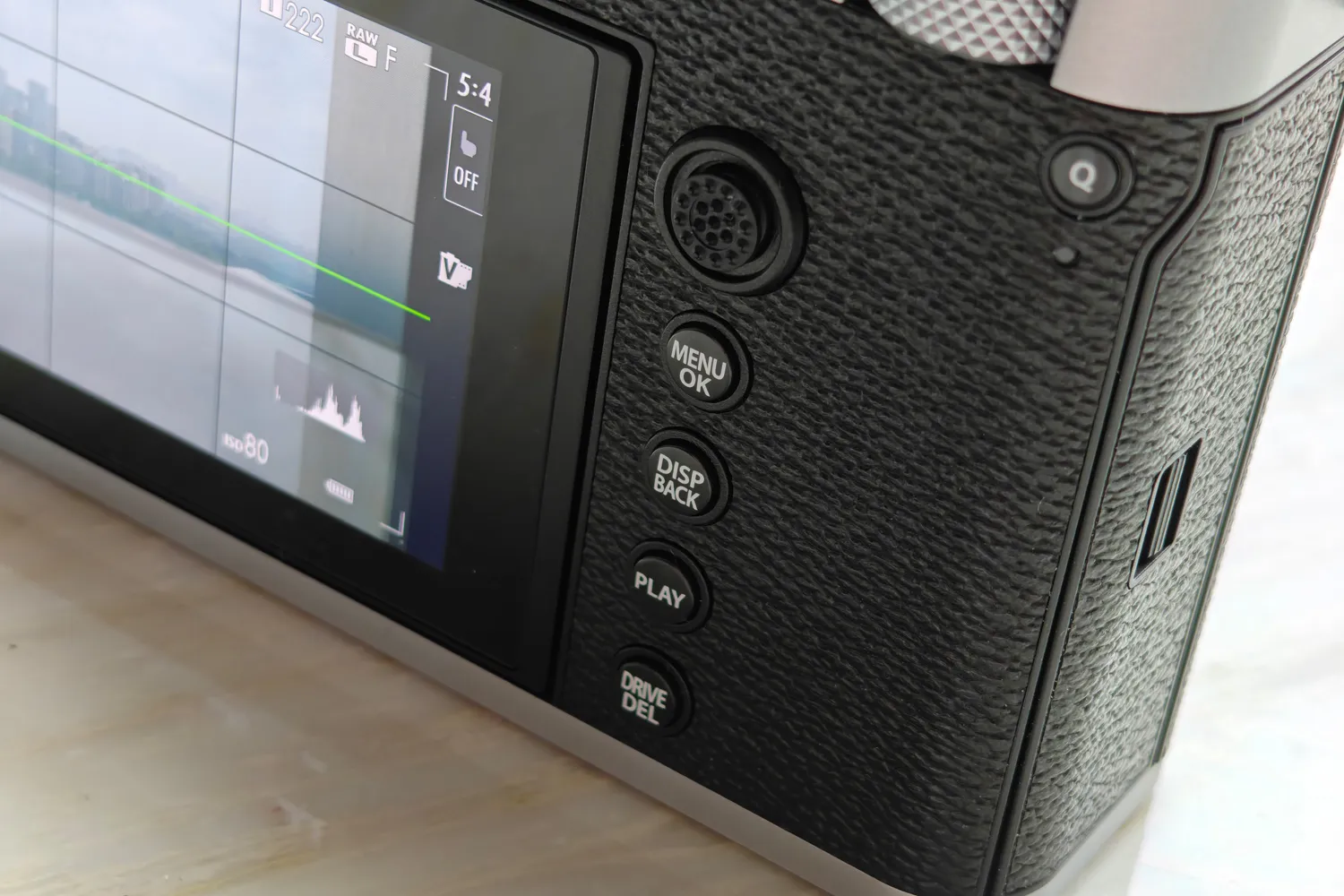
It’s no coincidence the smallest, lightest GFX model to date looks like an X100VI that’s had a growth spurt. Fuji’s premium compact has been perpetually sold out since launch, and building on its design is surely an attempt to have a repeat performance. Only the taller body and missing optical viewfinder give the game away.
The retro-inspired styling and precision-milled metal top plate have been faithfully upscaled, and you again have the choice of a black or silver body. This feels every bit the luxury item, on par with Leica for build quality and materials.
At 735g with battery and memory card it’s also an impressively portable camera given the sensor it uses. Or rather, it is until you bolt on the included lens hood and adapter ring, which almost double the length of the 35mm fixed lens. The latter is what gives the GFX100RF its weather resistance, so it worth fitting if you plan on being out in the rain.
How has Fuji managed to downsize to such a degree? There’s no optical viewfinder for a start, though you get an electronic one as well as an LCD touchscreen. The 35mm fixed lens also uses a leaf shutter, instead of the focal plane type found in most mirrorless cameras. That means there’s no satisfying thunk whenever you take a shot. The f/4.0 aperture can’t hope to match the Leica Q3 for dreamy depth blur, and finally there’s no form of in-body image stabilisation.
While I admittedly missed the X100VI’s fantastic hybrid viewfinder, the electronic one is a peach. It’s super-sharp, thanks to a 5.76million-dot resolution, is more than bright enough, and has a high refresh rate. The Surround View function, which layers semi-transparent lines to match your chosen aspect ratio or zoom, then makes for fuss-free framing.
Features & controls: dial it in
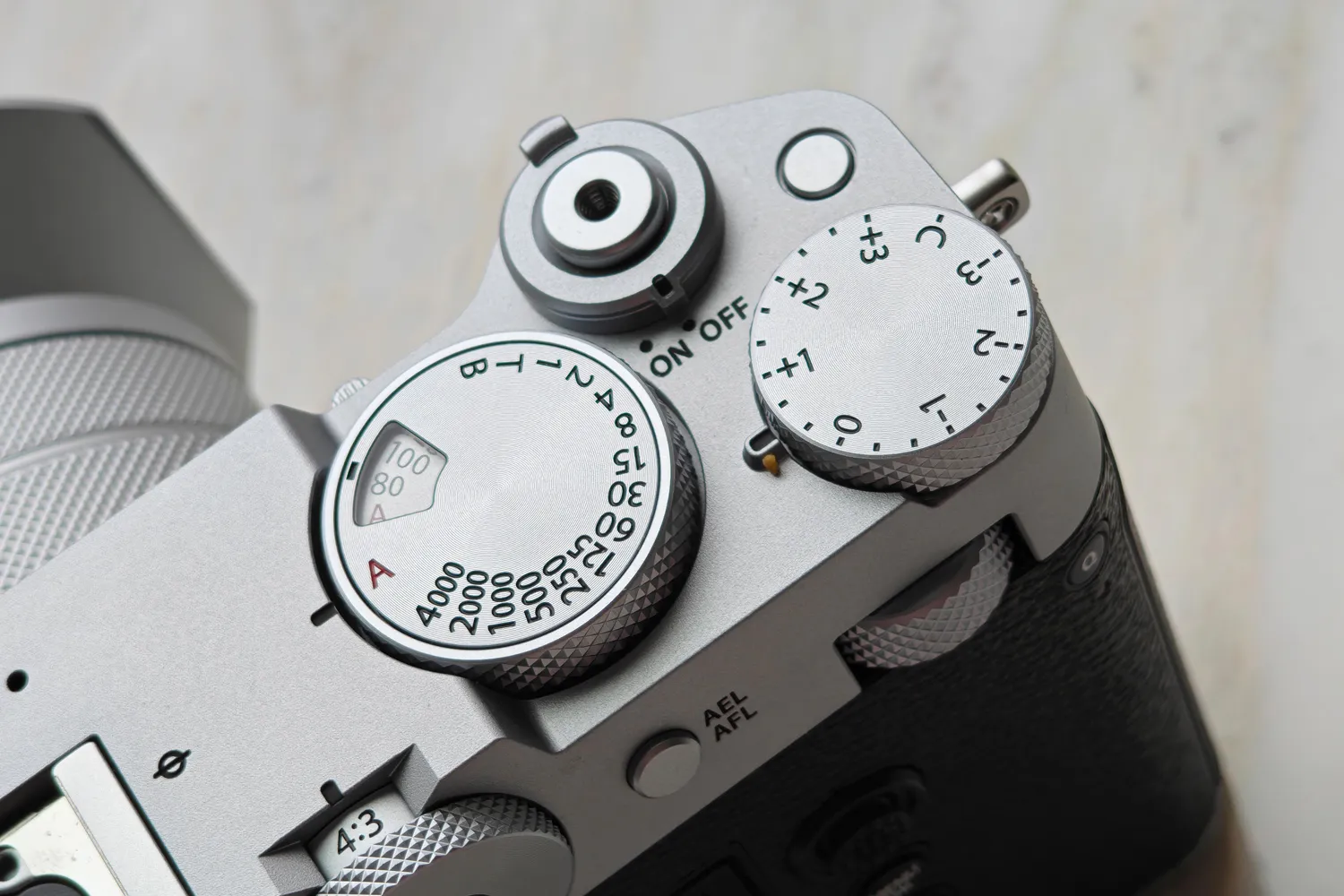
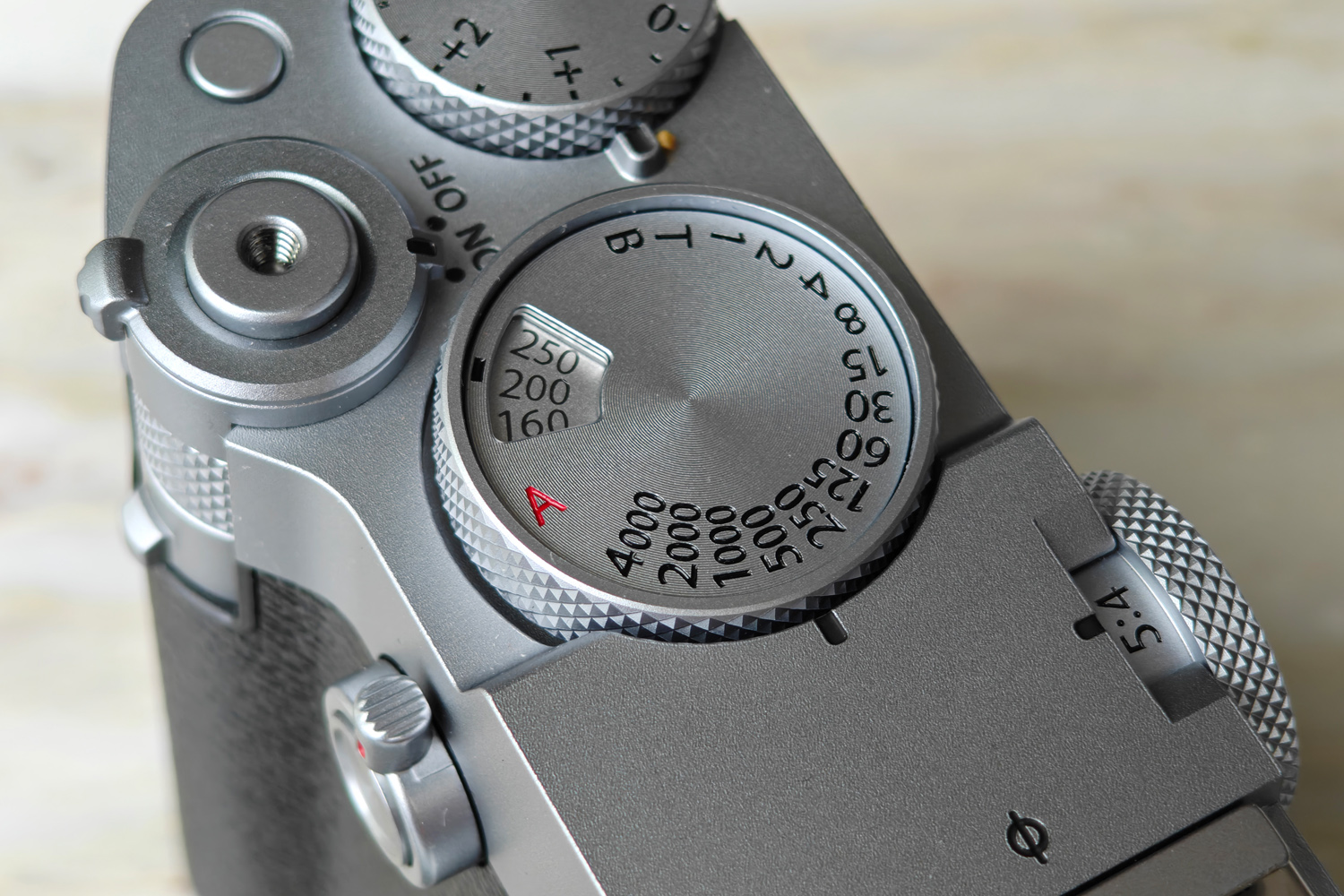
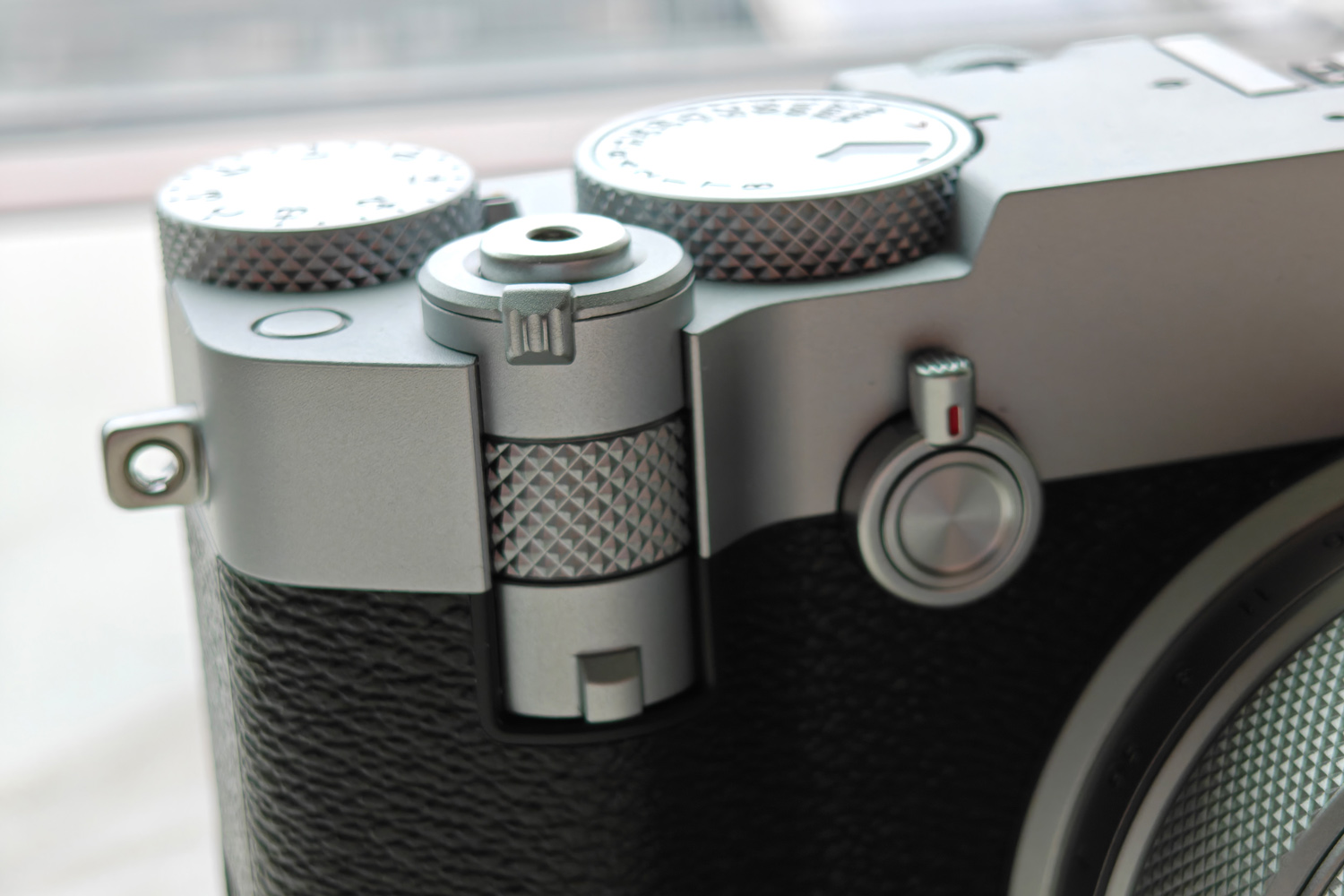
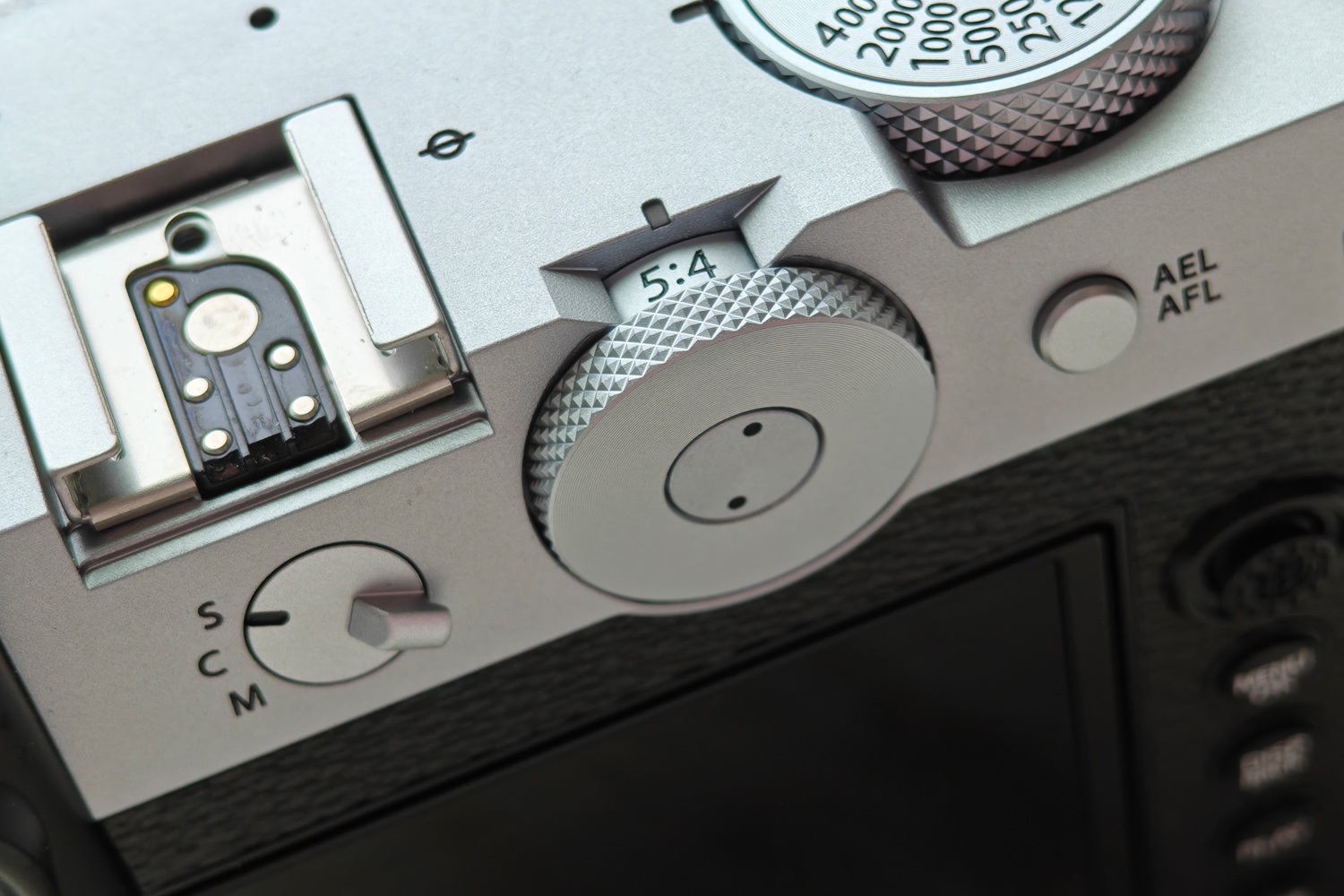
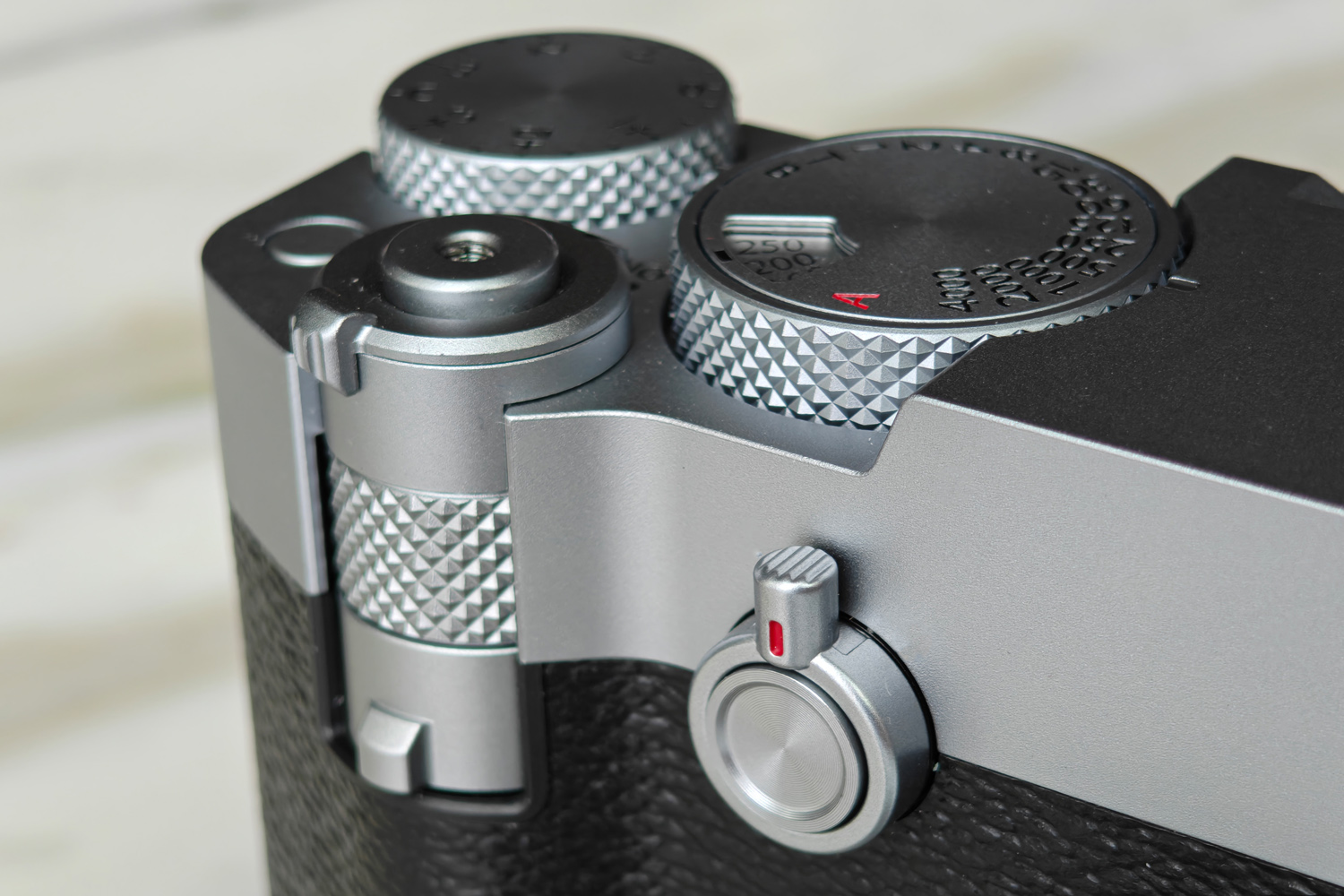
It might be compact, but the GFX100RF isn’t short on physical dials and controls for adjusting your image without taking your eye away from the viewfinder. The general layout means Fuji fans will feel instantly at home, but there are quite a few bespoke additions as well.
The lift-and-twist ISO dial has been carried over wholesale from the X100VI. It’s a real space-saver, putting shutter speed within easy reach and always showing the selected ISO value through a tiny window. It’s surrounded by an exposure compensation dial, customisable front and rear command dials, and the shutter button, but the top plate doesn’t feel at all crowded.
Your index finger isn’t short on things to do, with power, zoom and one of the command dials all stacked beneath the shutter button. It’ll take a while before remembering which is which comes naturally. The two-way lever to its side is just as versatile, with short and long presses to control viewfinder modes and activate the built-in ND filter. There’s an Fn button here too, and everything can be customised as you see fit.
It took me longest to get used to the new aspect ratio dial, on account of its vertical positioning. The number of options (nine) can be overwhelming, too, but it’s impossible to knock accidentally and being front-and-centre meant it proved fantastic for stepping out of the traditional 4:3 comfort zone.
There’s also another customisable control ring on the lens barrel – I set it to scroll through Fuji’s extensive selection of film simulations when not being used to manually focus – and the way the knurled aperture ring behind it clicks as you twist it is oh so satisfying. The rest of the rear buttons and the AF point adjustment joystick fell naturally under my thumb, though I found I had to stretch just a little to hit the Q menu key. That wasn’t very often, admittedly, because of the dearth of command dials.
Fuji’s menu interface was equally suited to the intuitive joystick at the side of the LCD touchscreen, and taps or swipes on the screen itself. It only tilts up and down, which while handy for low- or high-angle shooting, means well-heeled vloggers and selfie snappers will want to look elsewhere.
Performance: photo focus
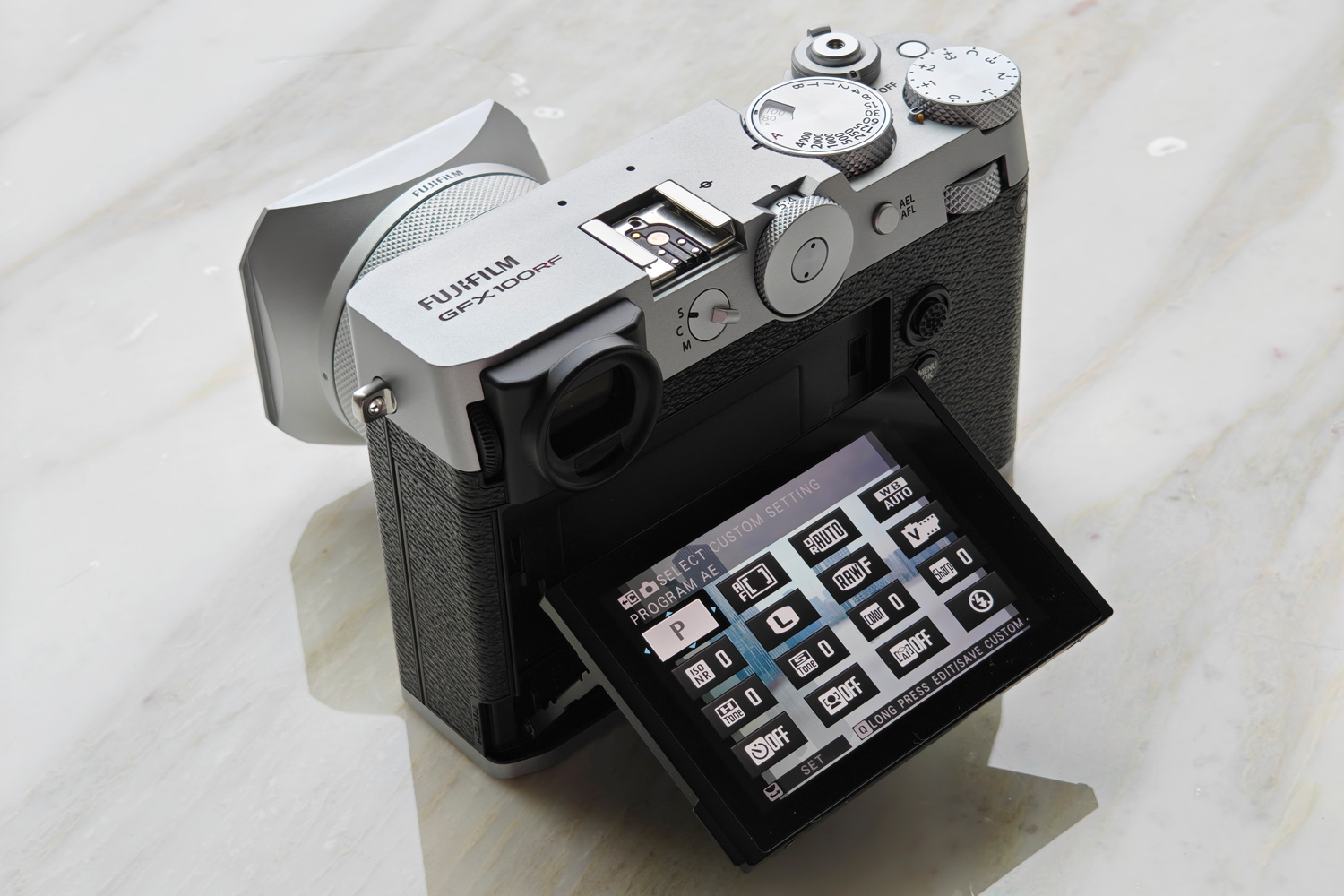

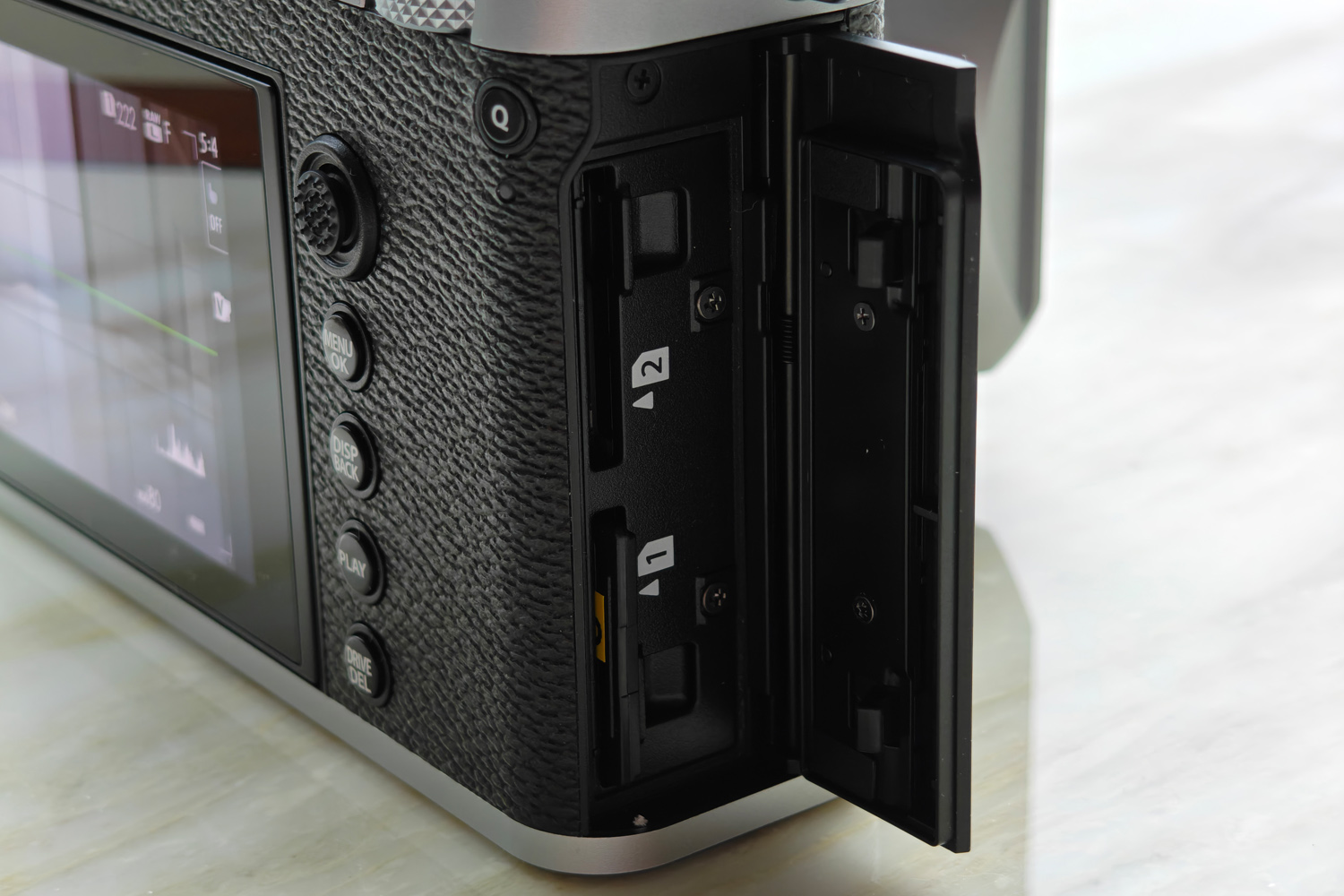
This is first and foremost a stills camera. While the GFX100RF can shoot 4K video and has a pair of 3.5mm ports at the side for microphone and sound monitoring, frame rate maxes out at 30fps – half that of the cheaper X100VI, which can also manage 6.2K/30p. The Leica Q3 also offers 8K/30p.
The door on the right side flips open to reveal twin UHS II SD card slots. I’d recommend filling both, as the files this camera spits out are simply colossal. RAW shots average over 100MB each, and JPEGs aren’t far behind. They’re easily fast enough for the 6fps continuous shooting function, which is all you really want for the sort of street and landscape photography Fuji is pitching it for.
I was very impressed by the GFX100RF’s battery life. I managed over 500 shots in one day and still had a little left in the tank. USB-C charging is reasonably speedy, too.
Equally rapid was how Fuji’s tried-and-tested X-Processor 5 image processor could focus on subjects. The AI-based subject recognition for people, pets and vehicles – or 99% of what a street photographer might want to capture – is really rather good, if not quite class-leading, and I liked having enough customisable buttons to quickly disable it when shooting cityscapes so passers-by didn’t steal focus.
The arguably modest f/4.0 aperture wasn’t a limitation during the day, focusing almost silently and rarely needing to hunt for a subject. The glass is stunningly sharp at maximum resolution, really showing off the amount of detail the sensor can capture. It holds up even once you start cropping and zooming. Low light does need more consideration, usually by bumping the ISO; I found ISO 6400 usable for night street scenes, and the GFX100RF copes well enough with a 1/30 shutter speed, though there’s a bit more trial-and-error involved.
Image quality: the golden ratio
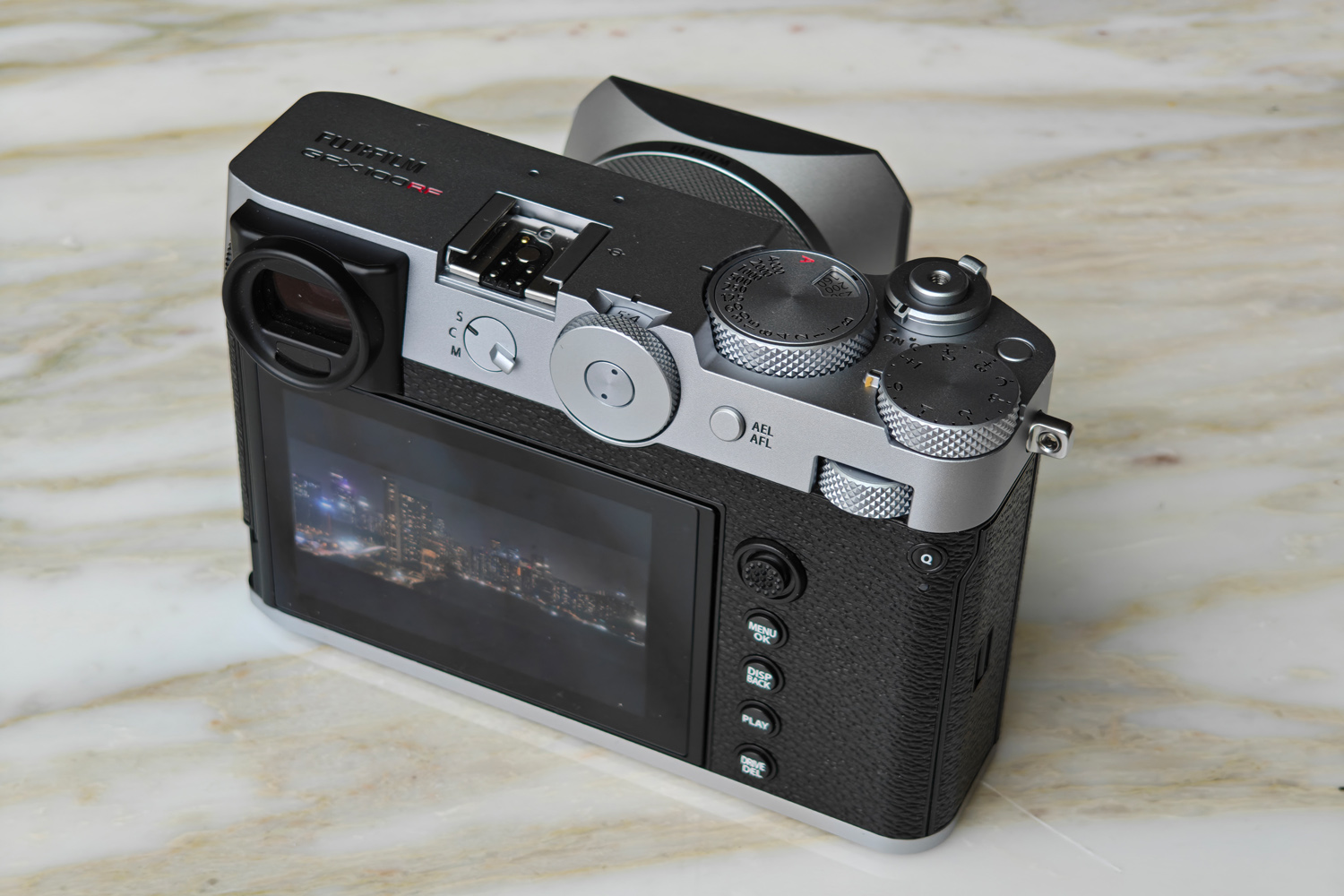
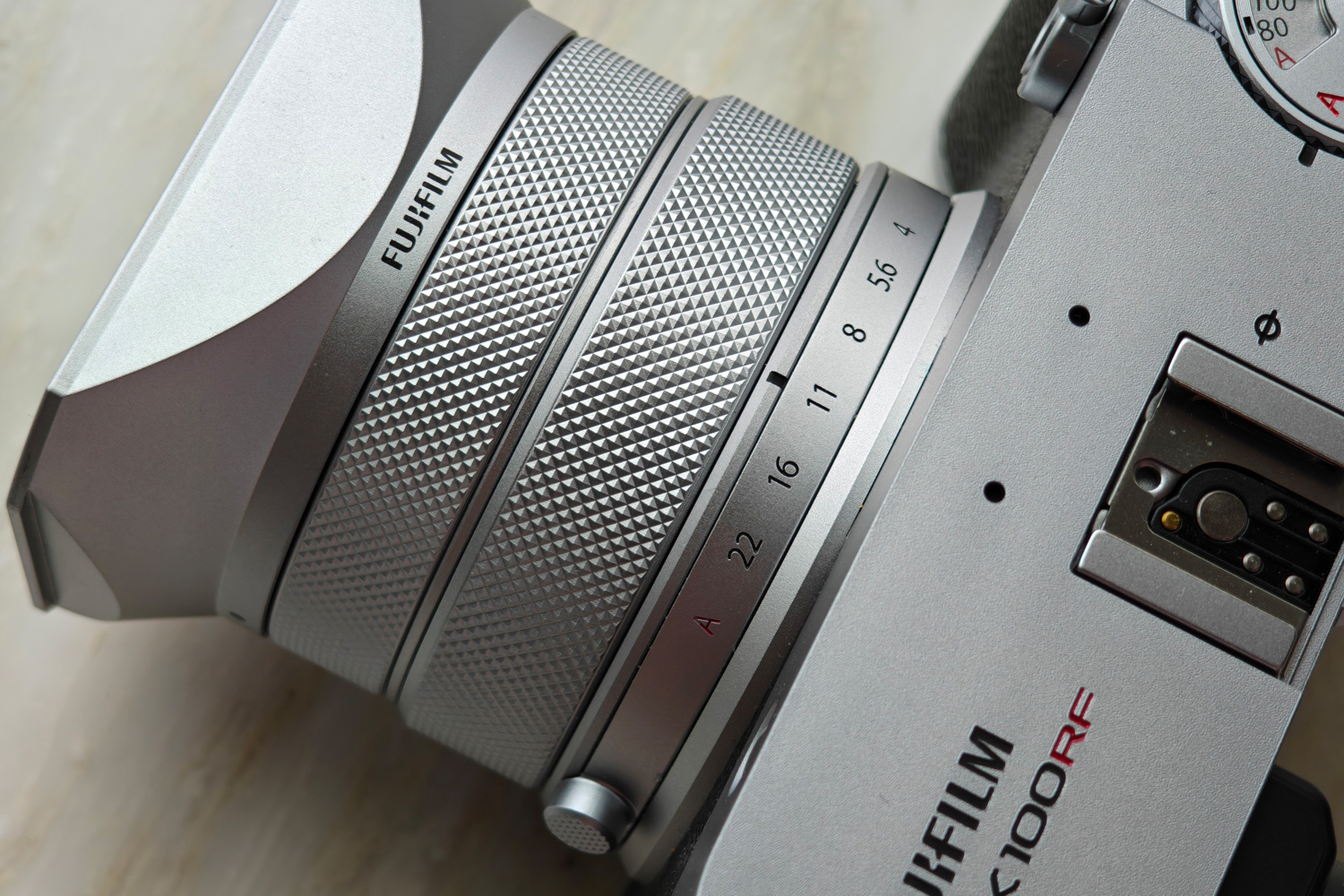
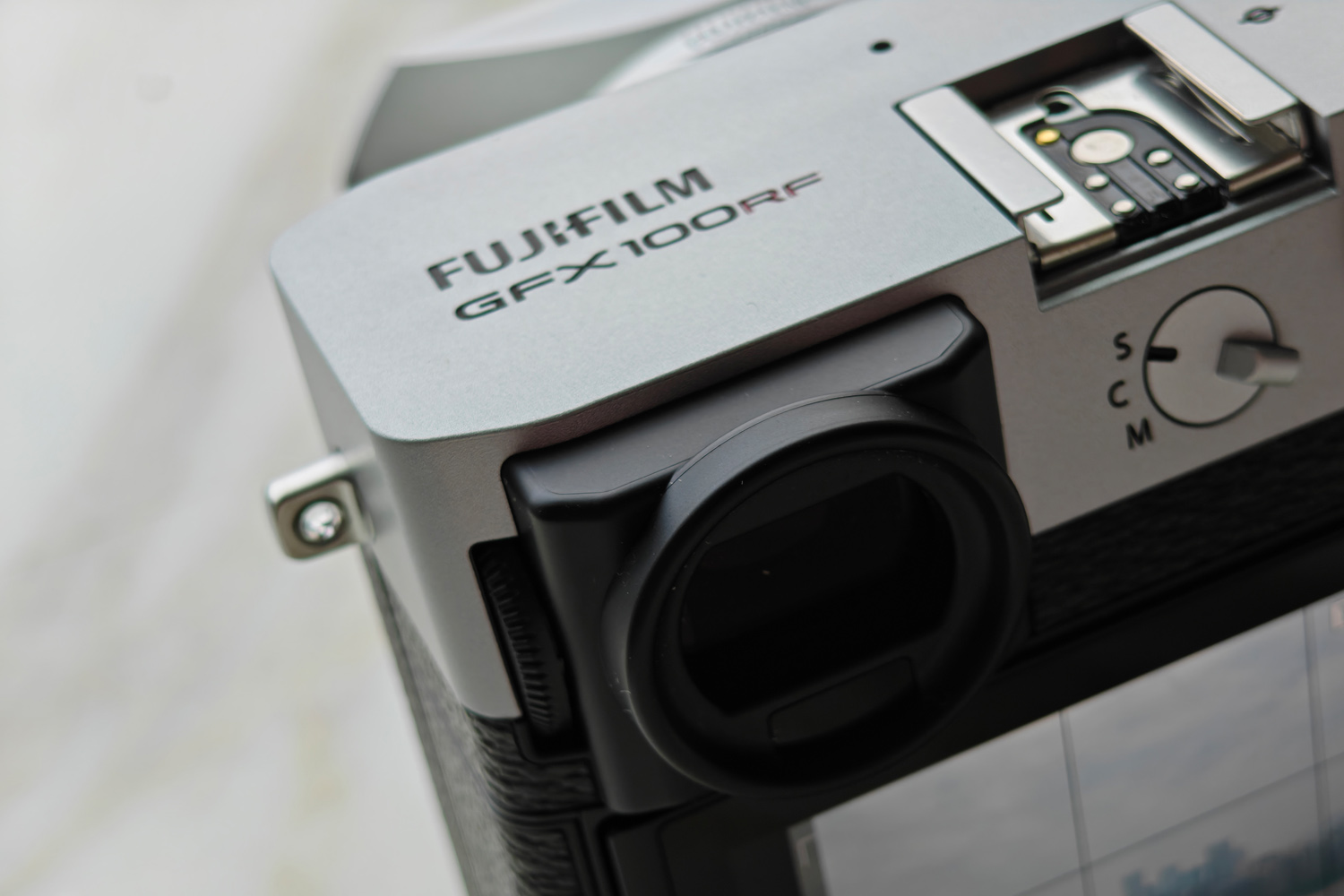
Fujifilm can always be relied on to deliver outstanding looking stills, straight from the camera. The colour science on show here is superb, with well-judged saturation and white balance. There’s a natural warmness to the standard mode, and all of Fuji’s 20+ film simulations are present and correct for adding a sense of occasion to an otherwise straightforward scene.
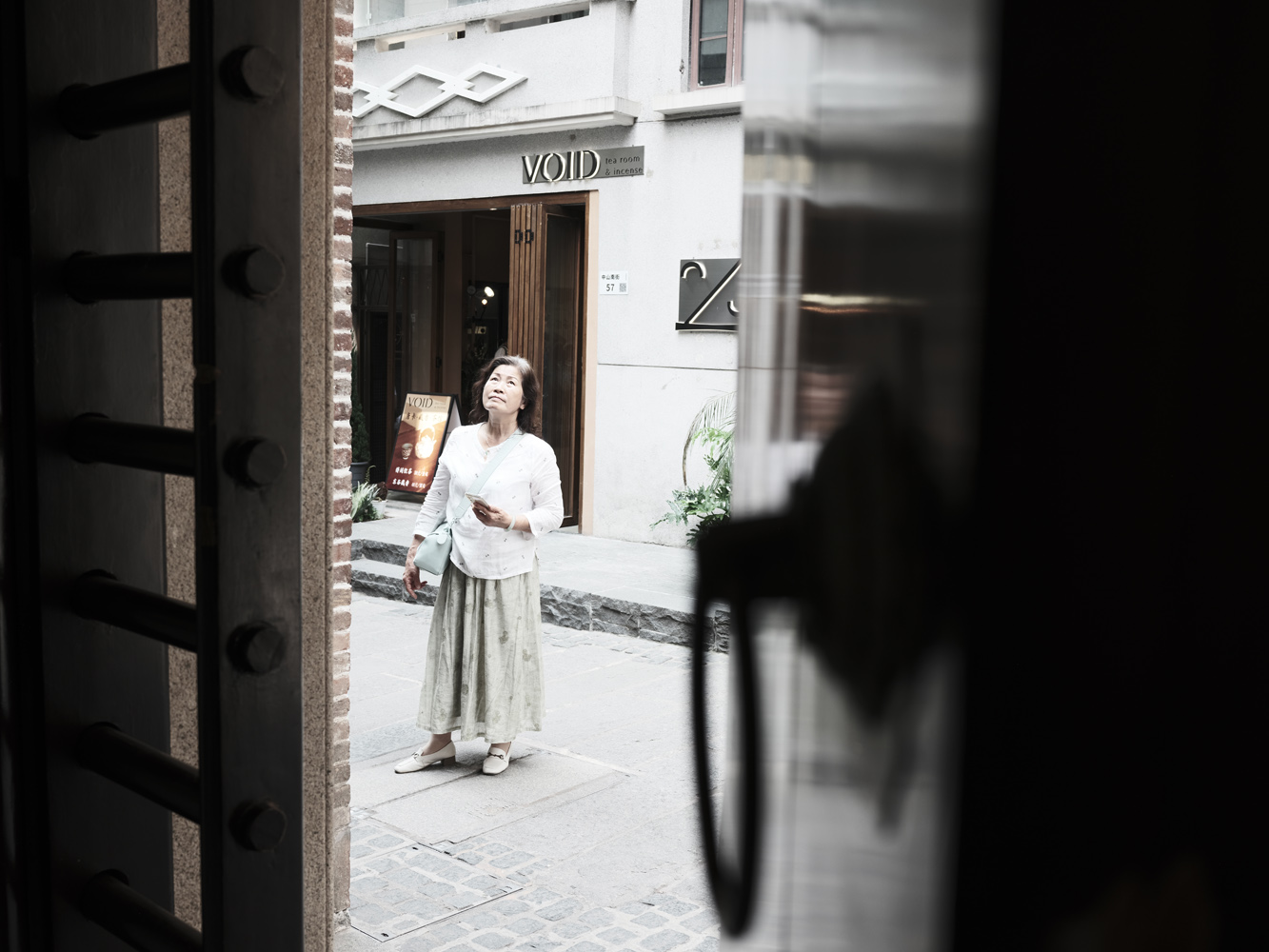
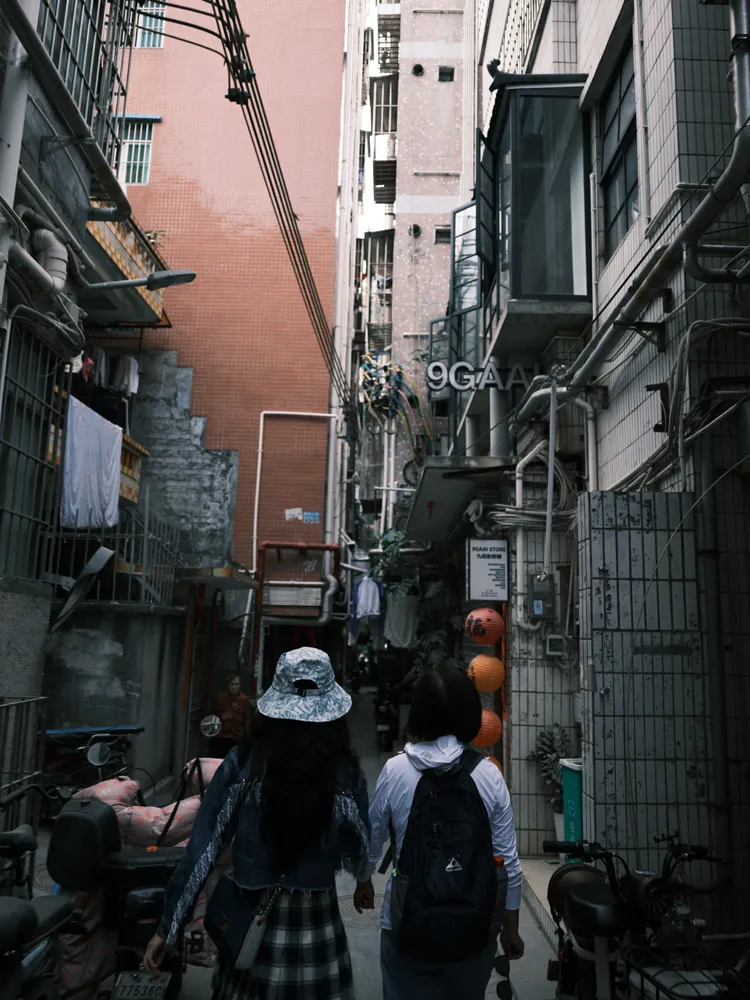
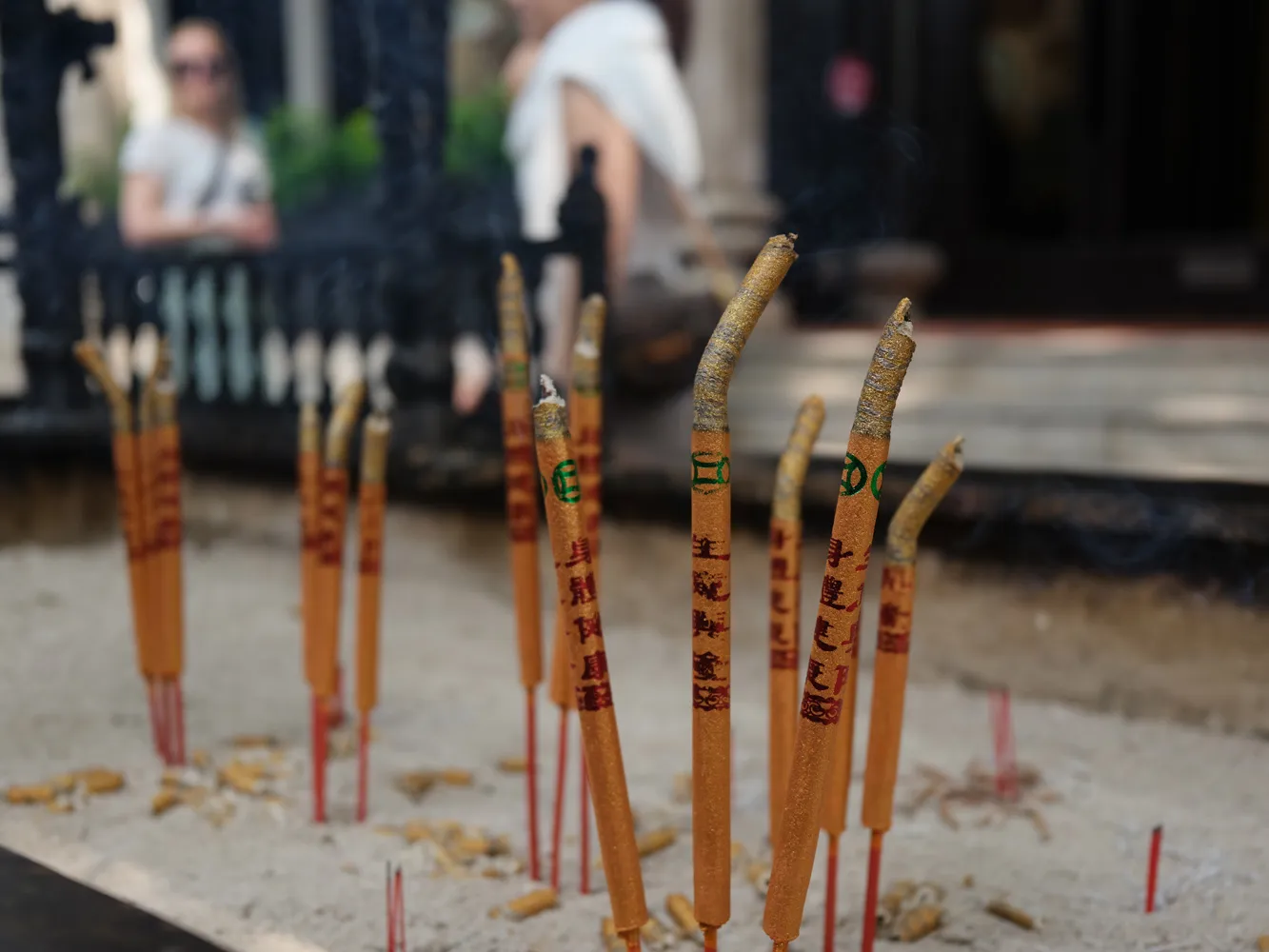

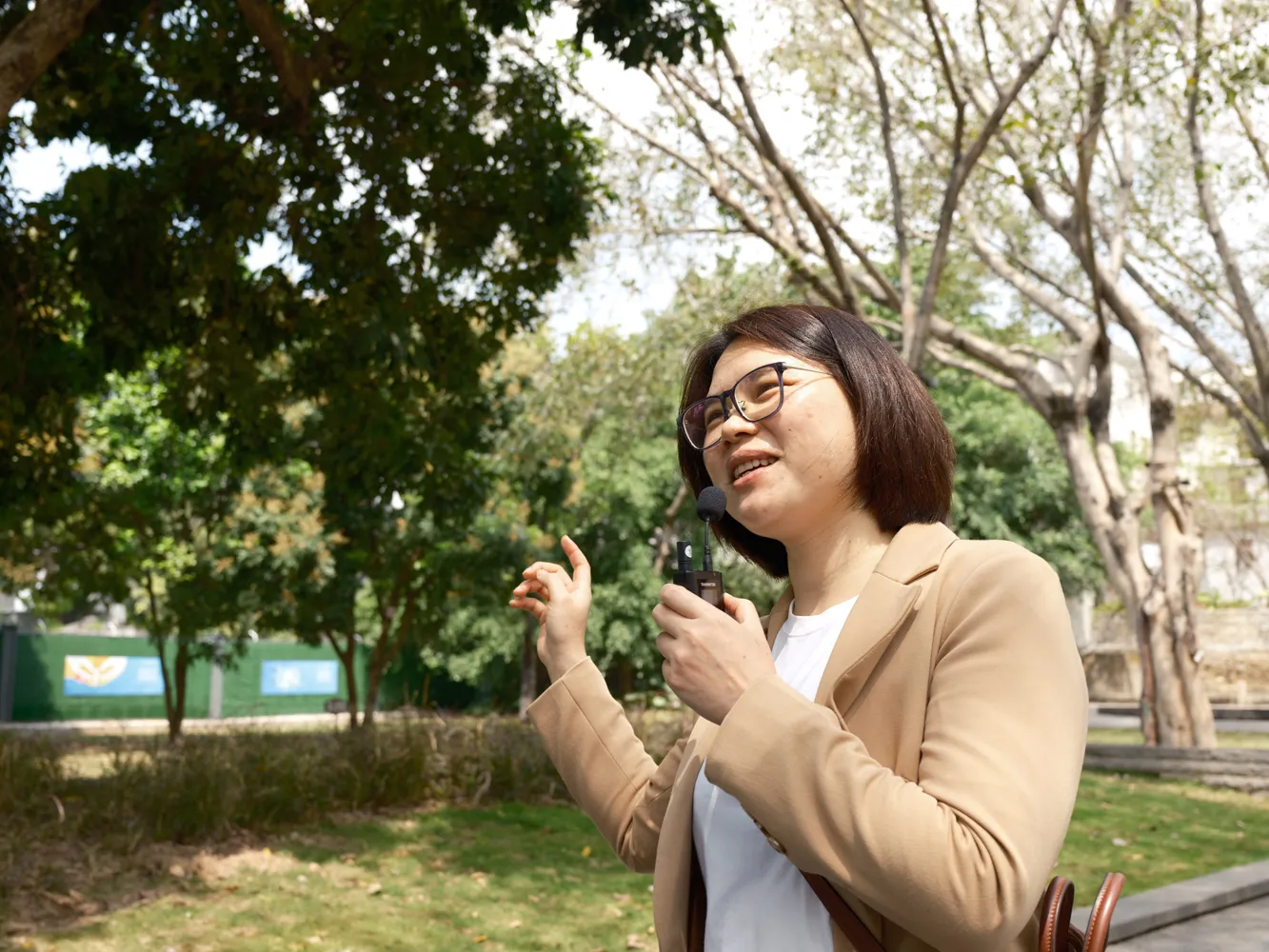

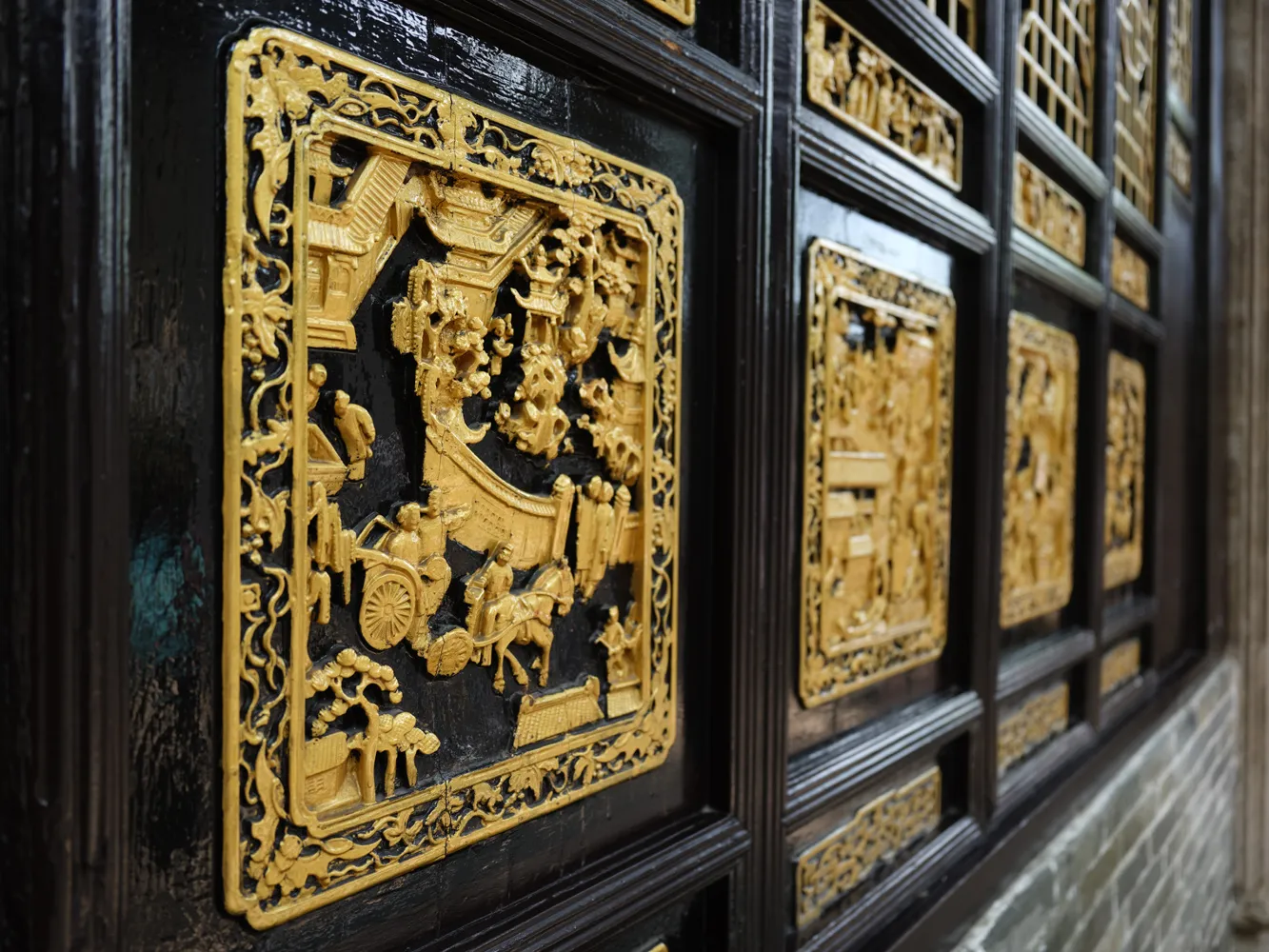
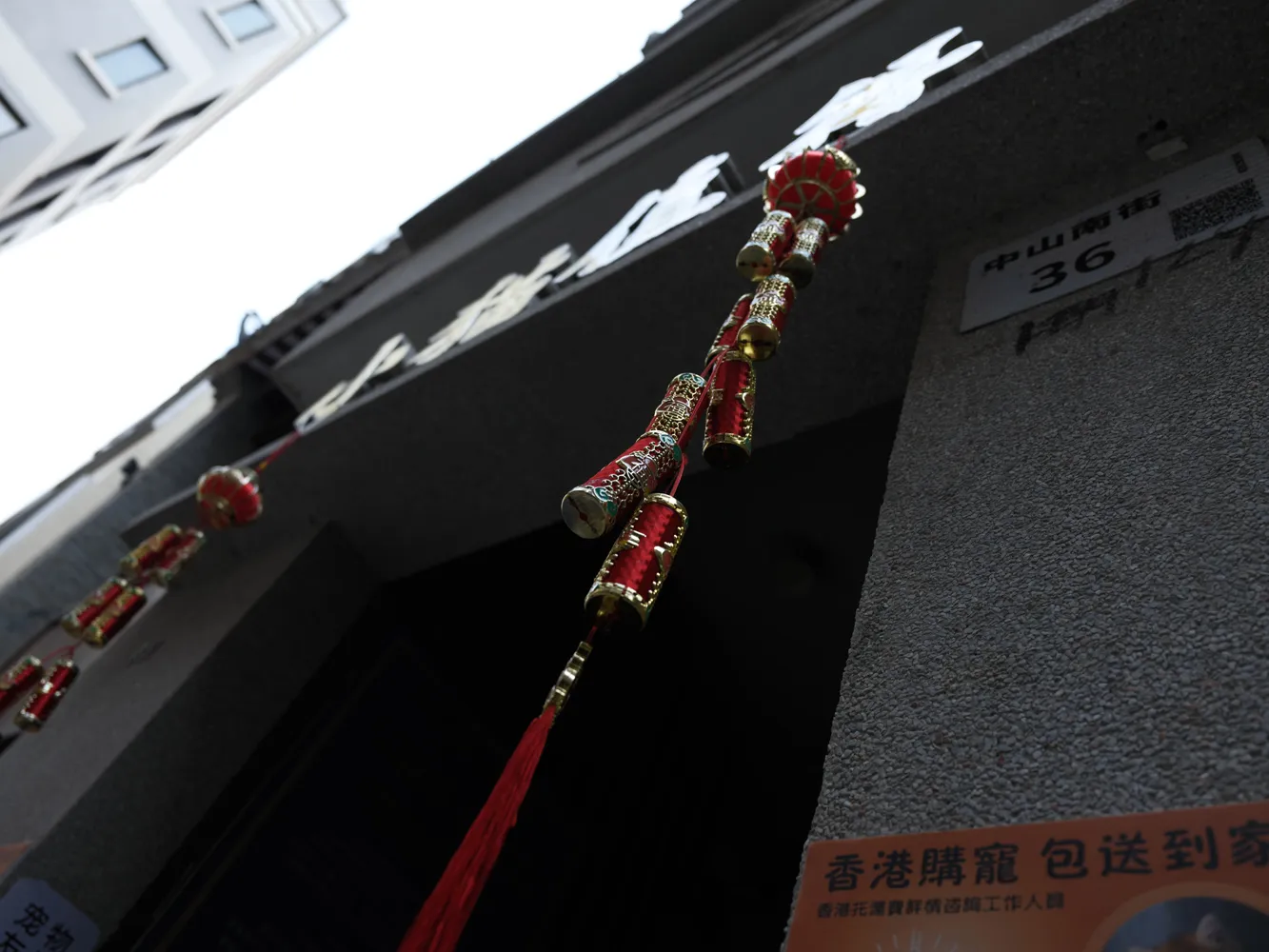
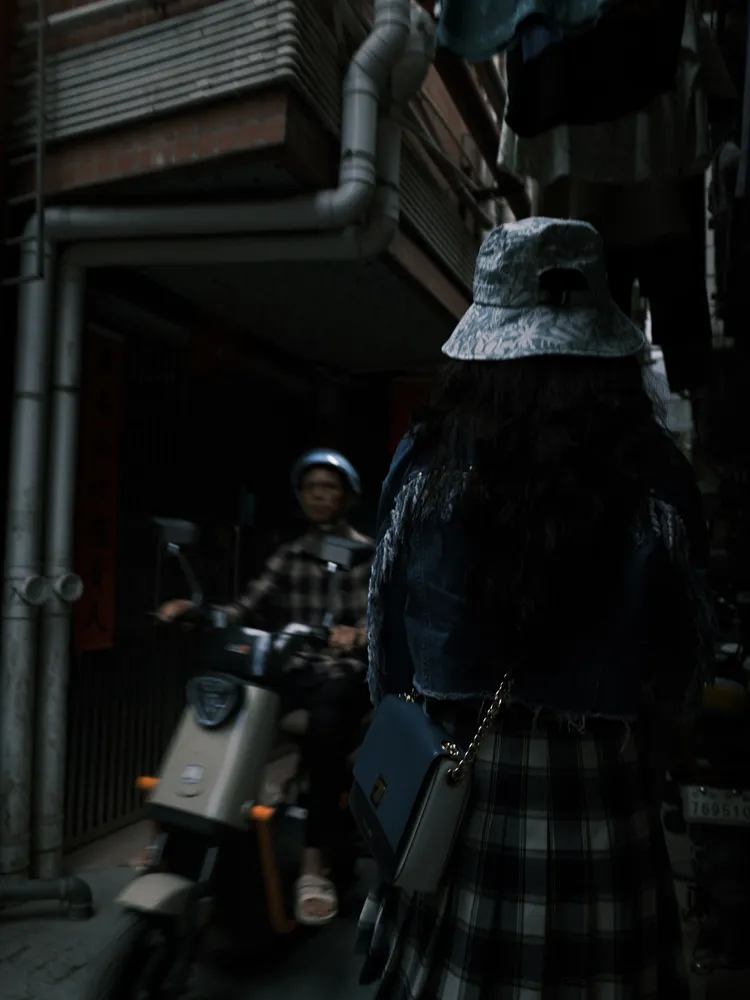
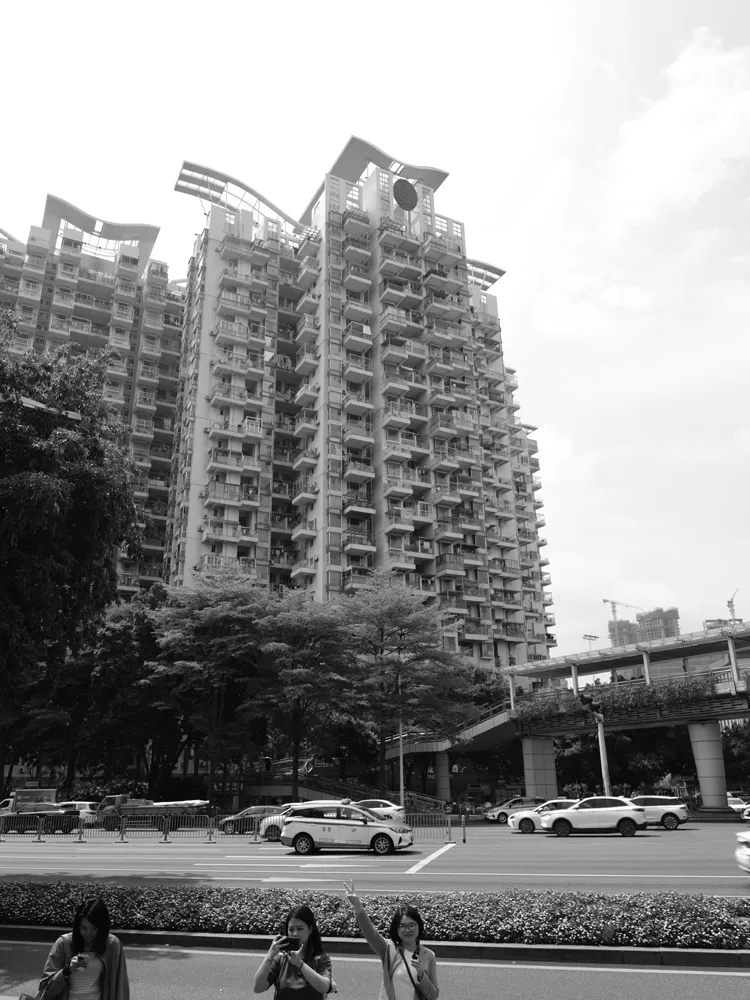
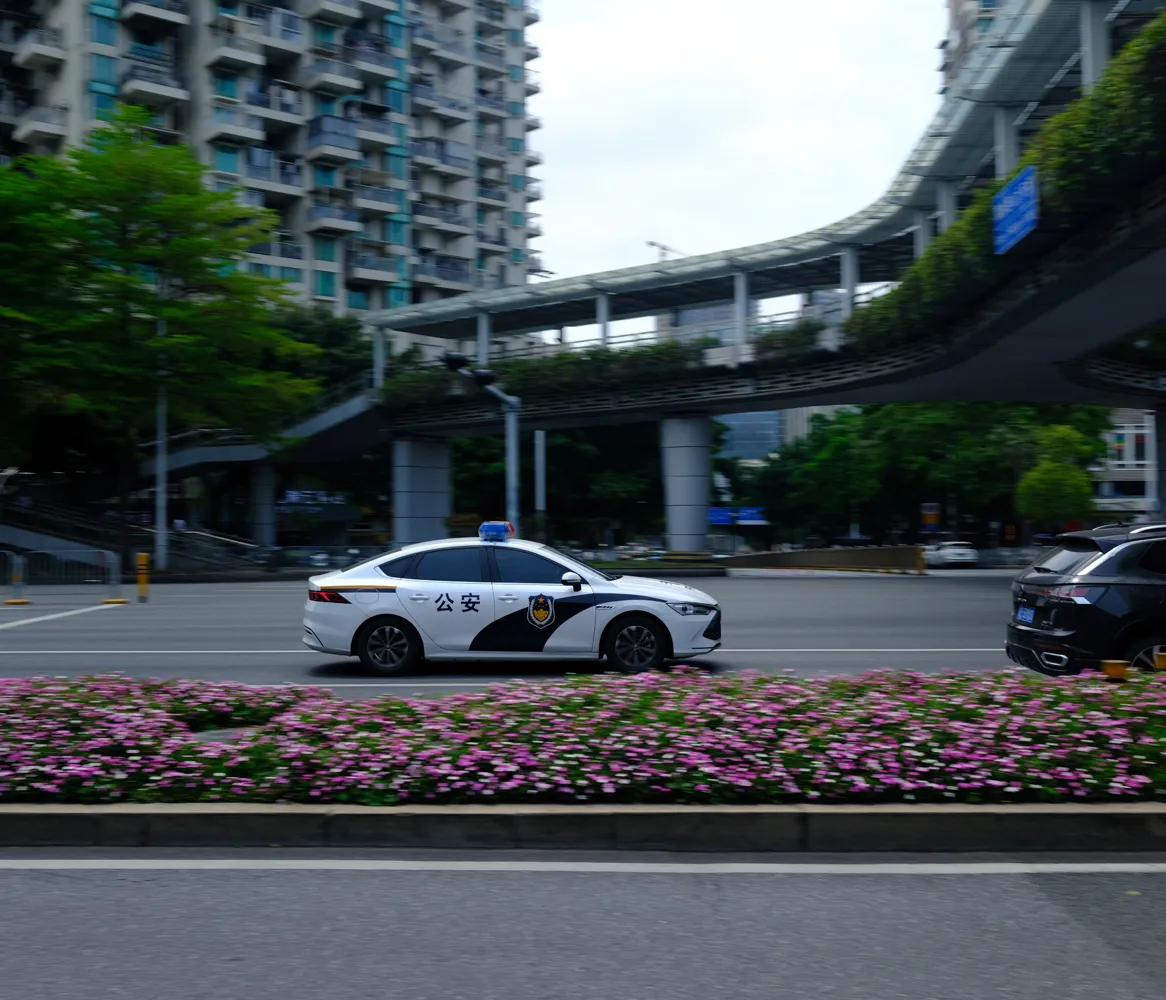
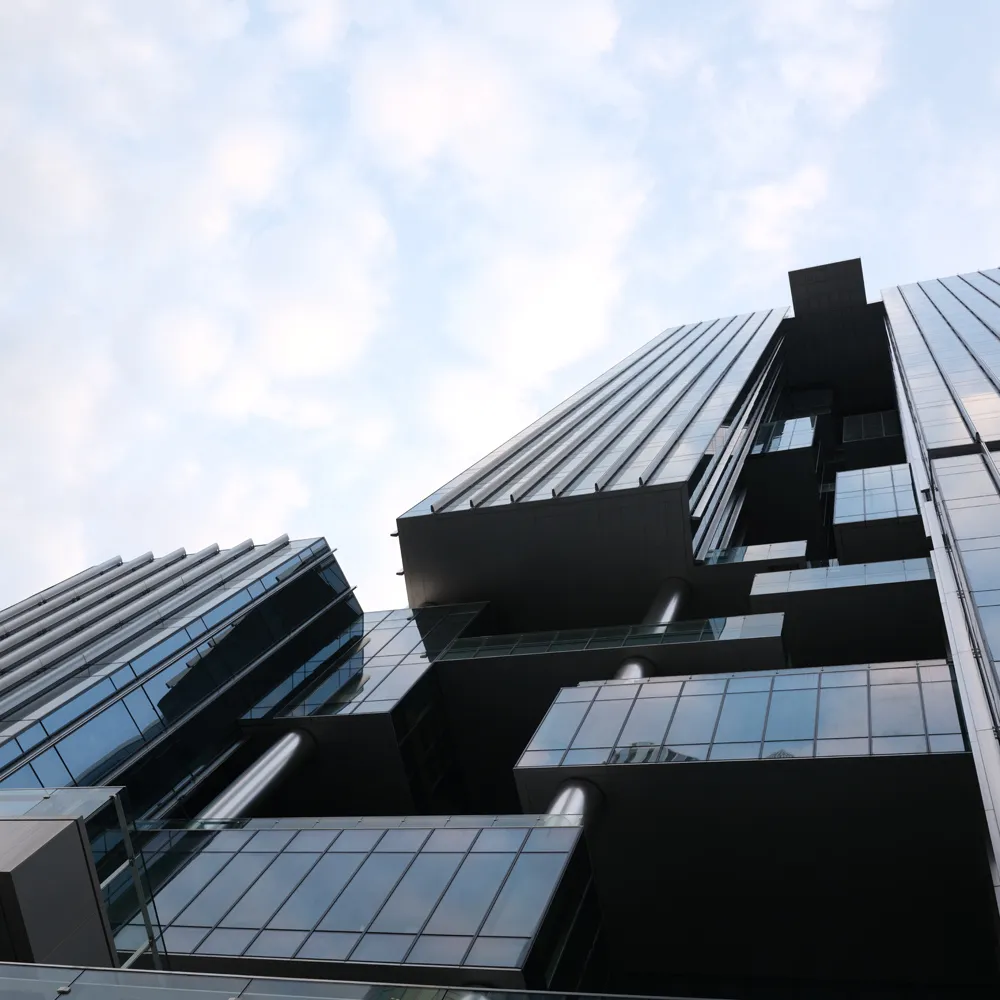
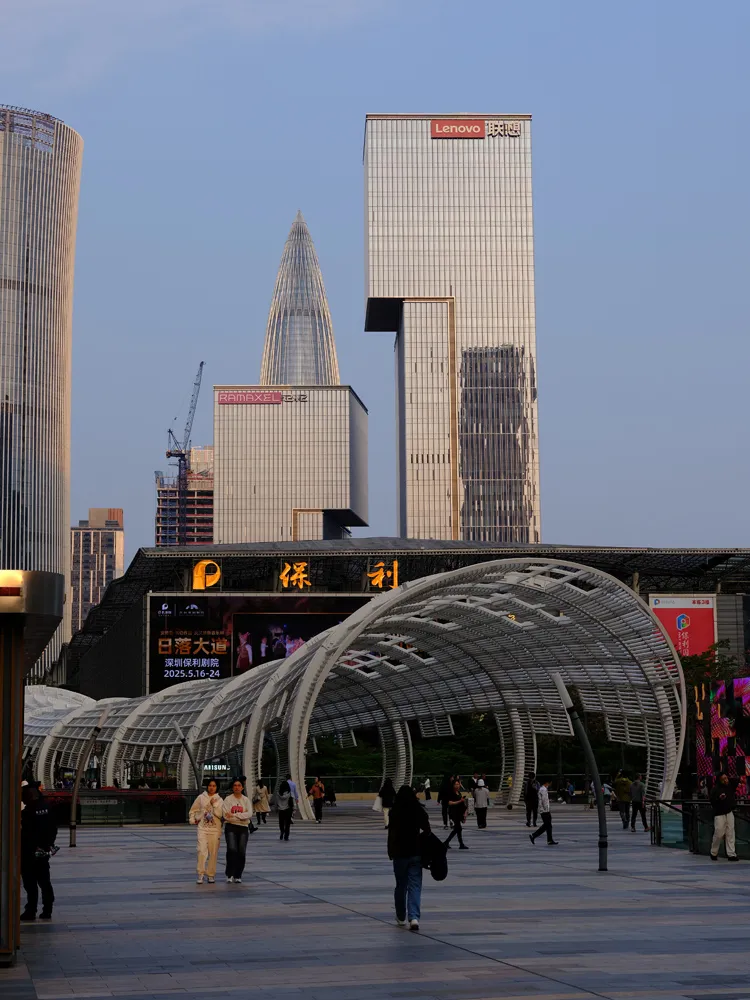
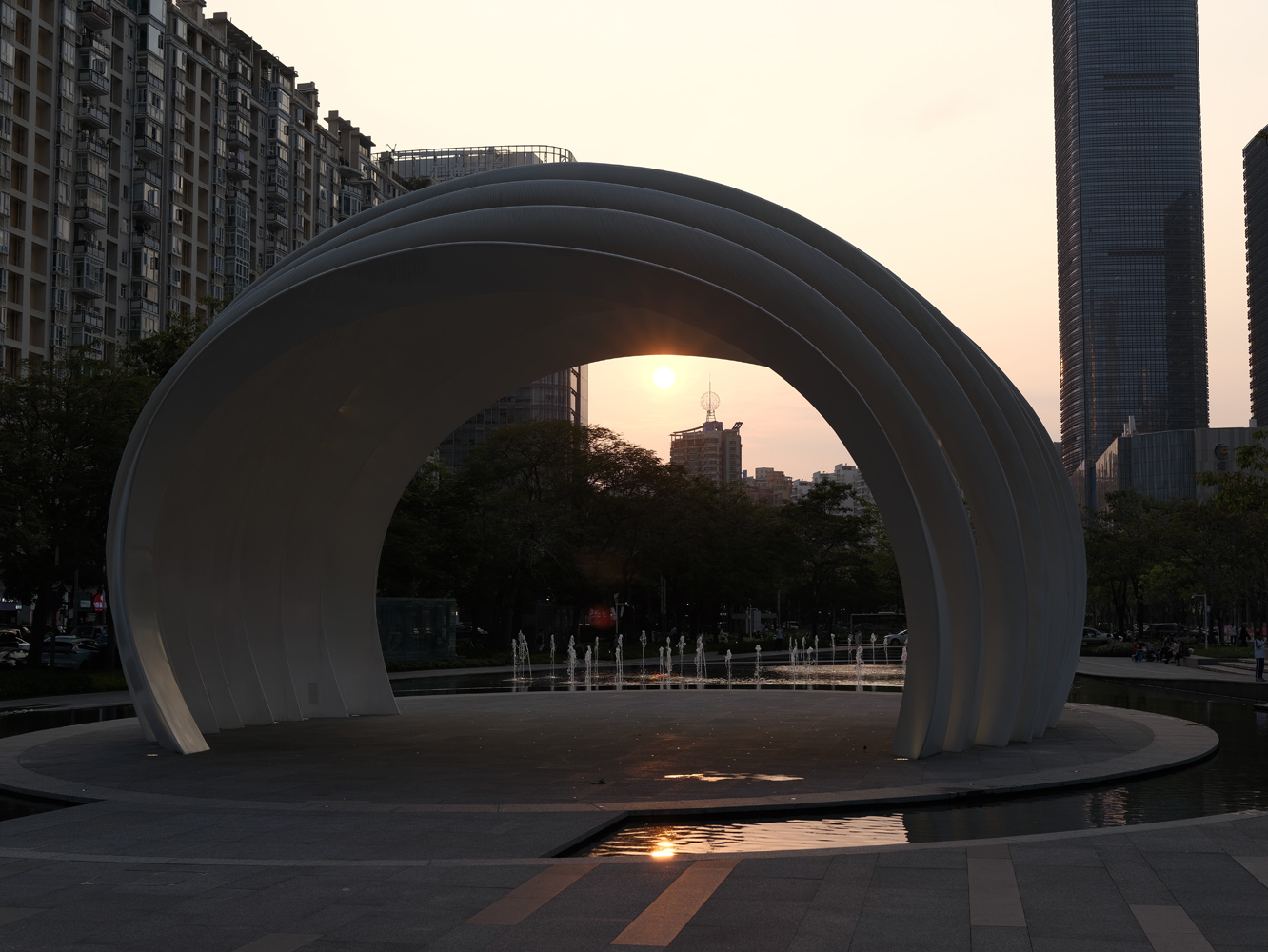
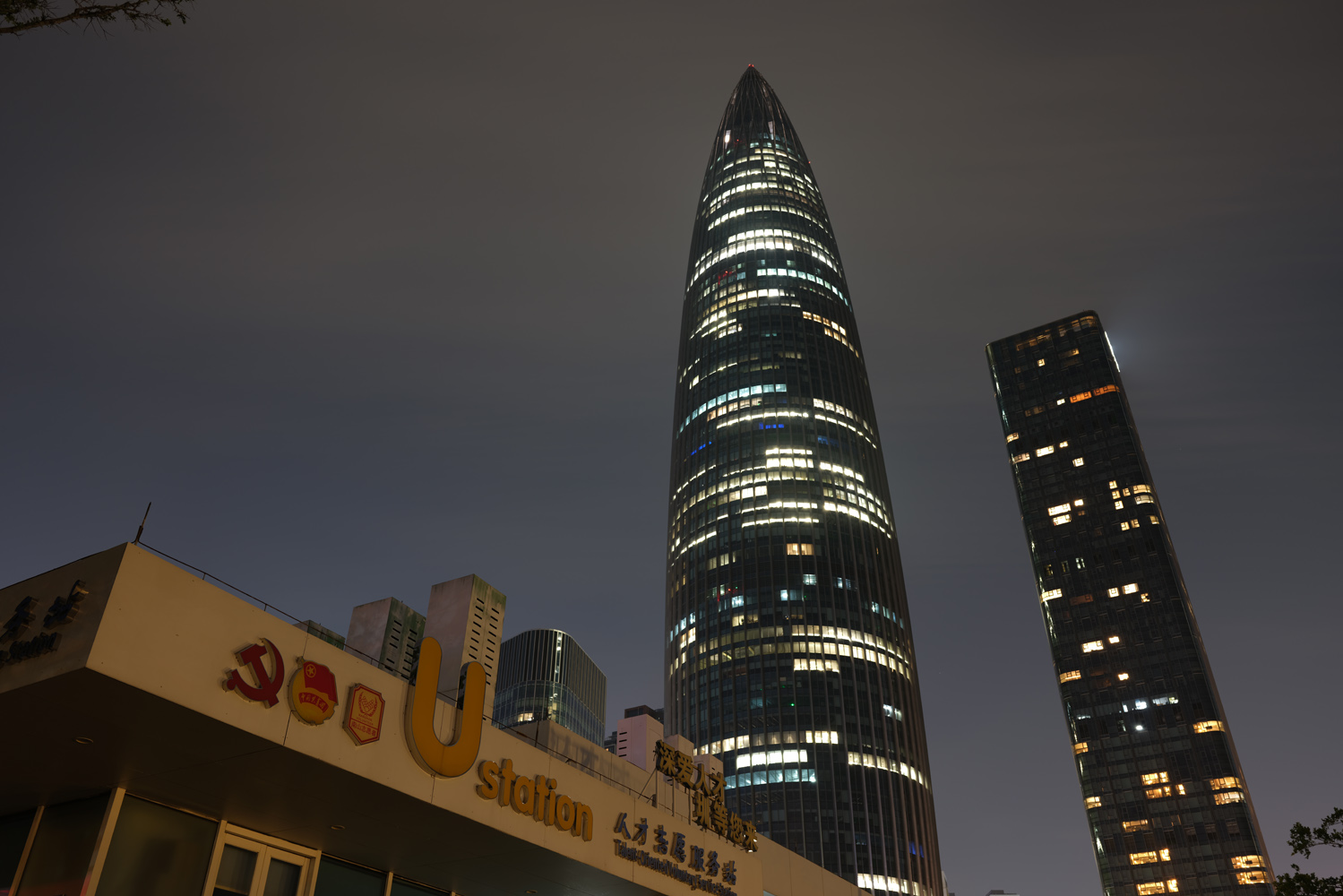
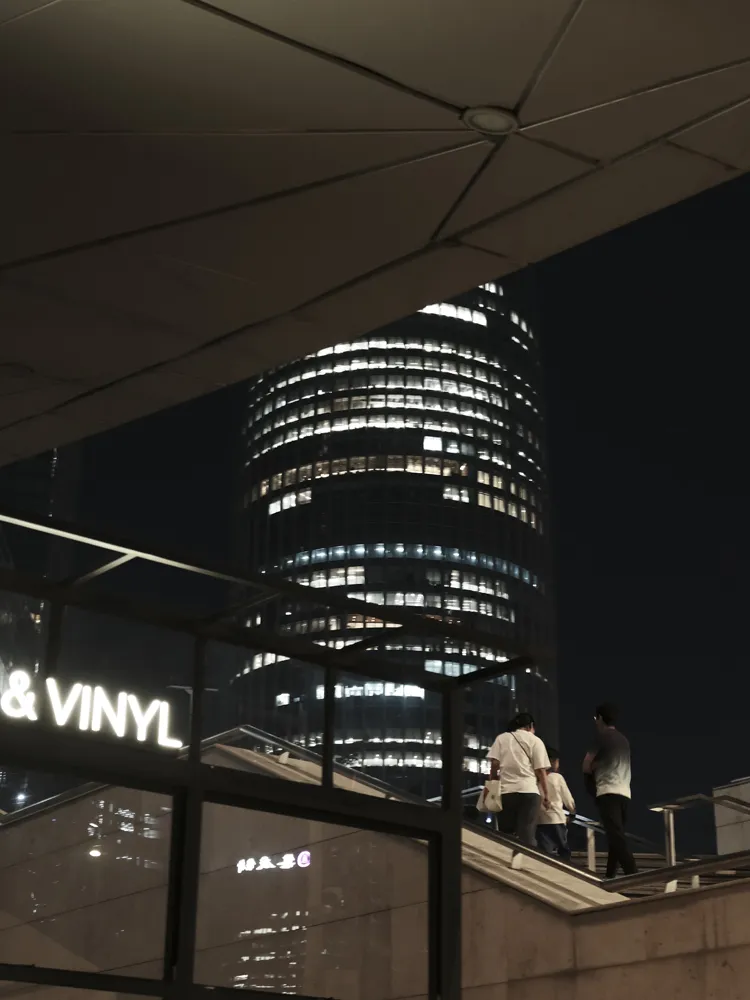
The bleached highlights and extreme contrast of Nostalgic Negative and Classic Chrome suit street photography perfectly. Velvia’s more vibrant hues were an ideal pick for bringing out the rich colours from flowers and passing cars. The 65:24 panoramic aspect ratio made famous by the 90s-era Hasselblad Xpan film camera instantly gives your shots a movie-like quality. Doubly so with the Eterna film simulation, which mimics analogue film stock used by the motion picture industry.
The 16-bit RAW files capture huge amounts of dynamic range, and dropping down to 14-bit when shooting bursts doesn’t lose a dramatic amount of picture info. RAWs preserve the entire sensor’s output, too, so you’ve always got a backup if you decide against the digital zoom, aspect ratio crop or film simulation you chose in-camera.
Yes, cropping the sensor and opting for some of the narrower aspect ratios will massively reduce your pixel count – but in an apples-to-apples comparison, the GFX100RF is still on par with a 62MP full-frame camera with a 35mm lens (ie the Leica Q3) and a 31MP APS-C camera with a 50mm lens (so the X100VI). As a result there wasn’t a zoom and crop combination I wasn’t happy to use, be it for social sharing or printing out.
The camera has built-in long exposure noise reduction for low-light shooting, but you must wait around for it to do its thing. This two-minute exposure took another two minutes to process before I could start snapping again. You can always turn it off and edit out noise in post.
Fujifilm GFX100RF verdict
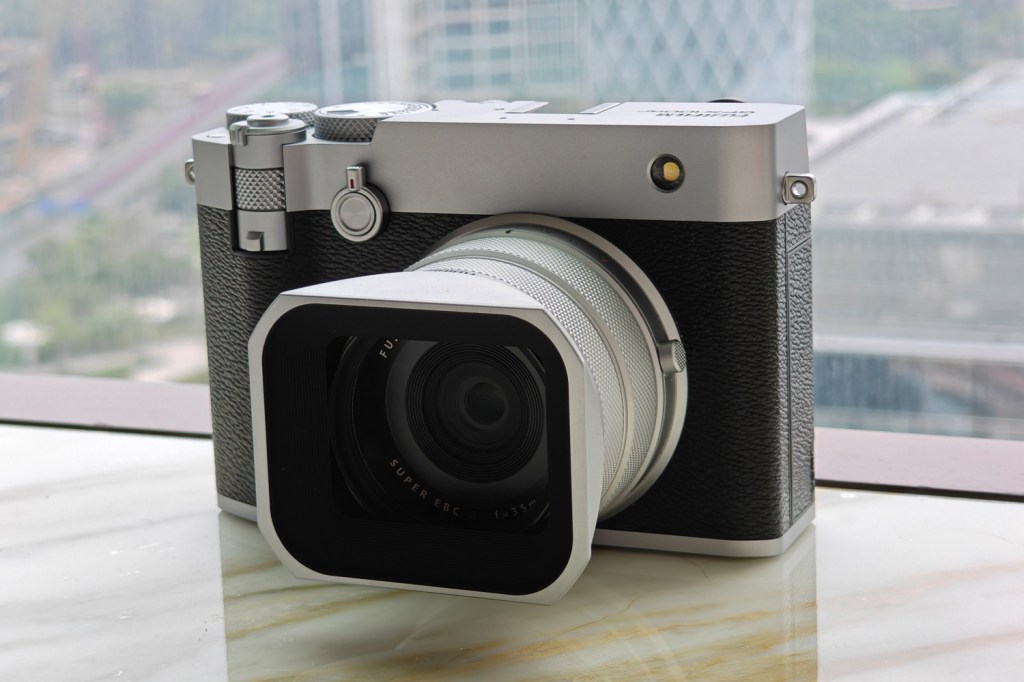
Cameras like the GFX100RF don’t come along very often. The unique combination of huge sensor and compact body have delivered a street photography star, and the compromises made to achieve it are relatively minor. The lack of in-body stabilisation only matters if you’re an exclusively after-dark photographer, and the f/4.0 aperture isn’t so limited that it rules nice bokeh blur out altogether.
Being able to zoom in without any significant performance penalty makes this very flexible indeed, while the film simulations and aspect ratio dial help it produce outstanding JPEGs – no editing required.
The sky-high price and singular stills focus make it a far more niche proposition than the X100VI, and one that arguably lacks some of the gravitas of a Leica. But it’s also one that delivers exceptionally detailed and engaging images in almost every shooting situation.
Stuff Says…
A genuine unicorn of a camera that takes outstanding stills. It’ll be overkill for many, but medium format just doesn’t get smaller or lighter than the Fujifilm GFX100RF.
Pros
Outstanding 102MP image quality
Digital zoom and aspect ratio dial bring shooting flexibility
Impressively compact and wonderfully well-built
Cons
Stabilisation and aperture compromises to keep size in check
Only basic video recording
A lot of buyers will struggle to justify the premium over the X100VI
Fujifilm GFX100RF technical specifications
| Sensor | 102MP medium format CMOS |
| Lens | 35mm f/4.0 fixed (28mm equivalent) |
| ISO range | 40-102,400 (extended) |
| Continuous shooting | 6fps |
| Video recording | 4K/30p |
| Screen | 3.2in tilting LCD |
| Viewfinder | 5.76m-dot EVF |
| Storage | 2x UHS II SD |
| Connectivity | Wi-Fi, Bluetooth, USB-C, mini HDMI, 3.5mm |
| Dimensions | 134x90x77mm, 735g (body only, including battery) |

